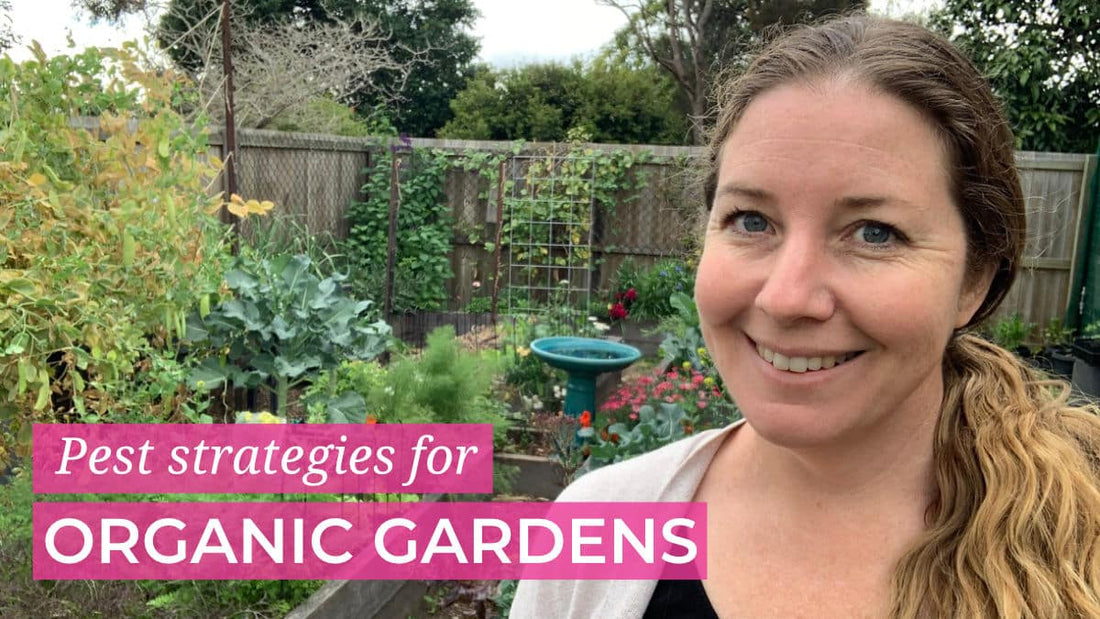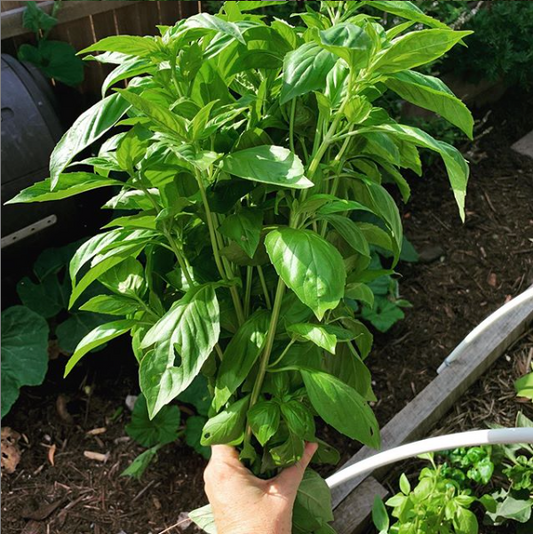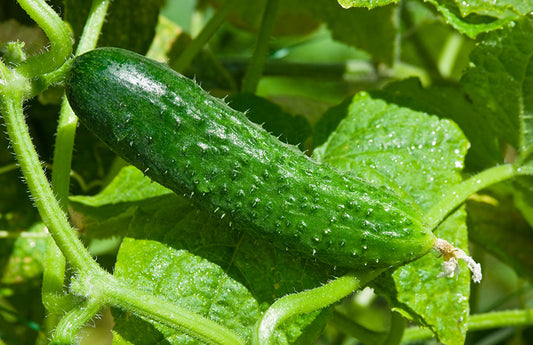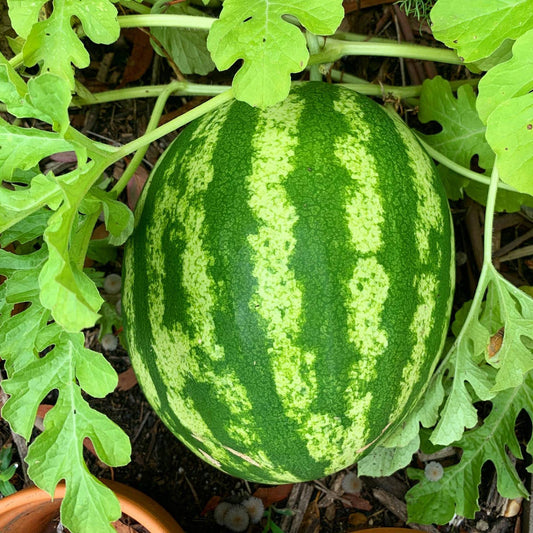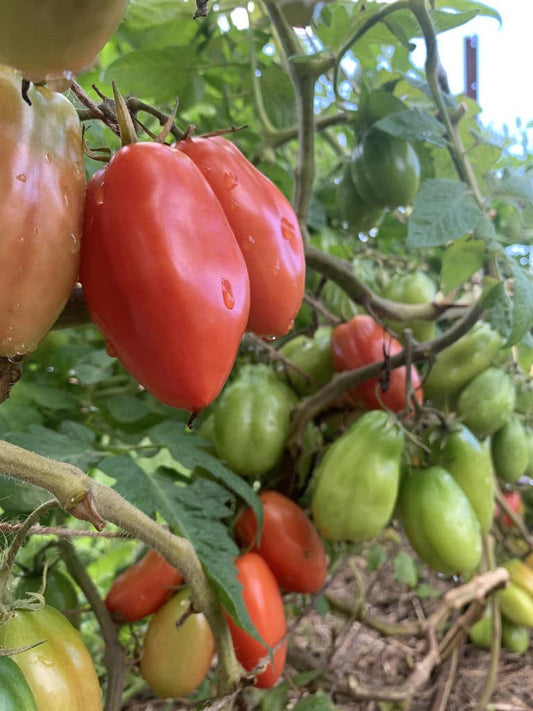Love growing your own food but hate constantly dealing with pests? No gardens are immune to problems, but we have taken on a wholistic approach in our garden which has had success.
Good Soil Health
Healthy Soil is the cornerstone to the success of our garden. If our beds are depleted we notice a huge increase in bug attacks on our plants. When the soil is healthy plants tend to withstand bug attacks and are way more resilient. Here our focus is creating a healthy soil base with good organic matter. We use no dig methods that help keep the soil food web intact.
Although they can’t talk, plants can tell you when they are not happy and 9 times out of 10 the problem relates to poor soil health.
Companion Planting
Our approach to companion planting is perhaps not typical in the sense that certain plants despise being planted to other plants. We do not prescribe to any particular rules in this respect. We do however follow some basic principles and the key really is planting a diverse array of plants which includes a lot of flowers.
As regular backyard gardeners, we don’t need the efficiency of what is required in market gardens. We can interplant all sorts of things and make a rule that each bed we plant out always has to have a good mix of different textures, smells, shapes and there must always be flowers.
Plant for beneficial insects
Leading on from always planting flowers, this is the best way to increase your population of beneficial insects and birdlife. It was very hard for me to make this switch, especially when I didn’t have much space - I wanted it to grow food. But some of the best flowers for attracting beneficials are actually allowing your vegetables to go full circle and go to seed. Most flowers also grow well in pots so you can always plant a few pots with flowers around your patch and move them around.
Top flowers for your veggie patch
- Sweet Alice (alyssum)
- Yarrow
- Snap Dragons
- Violas
- Cornflowers
- Sunflowers
- Salvias
- Perennial Basils
- Marigolds
- Calendula
- Zinnias
- Dianthus
Top beneficial insects you want to see
- Ladybirds (there is one bad one)
- Praying mantis
- Spiders (yes they should be number 1!)
- Lacewing
- Assassin bugs
- Parasitic Wasps
Get a bird bath
If I am honest, I do have a fear of birds, and the idea of attracting them to my garden was not that appealing at first. But after installing a bird bath in my garden I have noticed a dramatic decrease in the bug population. The big one being grasshoppers which are impossible to keep a handle on if you’re not out there catching them. We need to install an additional bird bath in our front garden where we do still have a problem with grasshoppers.
Yes some birds will eat your produce too - parrots, cockatoos to name a few. But if you can get in Butcher birds, Magpies and Noisy Miners they will help keep things in balance.
Stay away from sprays (if you can)
There are loads of organic sprays on the market. Unfortunately a lot of them do also affect your beneficial insects. Before you reach for the eco-oil for your aphids, take a closer look and see if you can see some ladybird larvae chowing down or lacewing larvaes collecting bodies.
We only ever use some if things are extremely bad, and I always take a super closer look before spraying. I would often rather accept the loss if I can, and use infestations to attract more beneficial insects that would keep future outbreaks in check.
Exclusion Nets
We use exclusion nets a lot here to control fruit fly, birds and also possums. Unfortunately they are not very successful against rodents (they will eat right through or slip in through very small spaces.
Another downside is you lose your balance that you would otherwise get allowing benficials to enter. All it takes is one sneaky moth to enter and it’s all over. This is why I opt for bags over individual fruits/plants rather than completely excluding everything.
Rodent control
Usually one or two rats can be causing the majority of damage and pretty quickly overnight. Poor possums get blamed a lot for the deeds of rats. We know it’s a rat if it’s a brassica or corn that has been eaten but the tell tale sign is the teeth gnawing marks on what they have left behind. As we have seen owls in our area I am not a big fan of using baits that have second life.
We opt for old school traps, and recently we were given a bucket trap that has been the most successful with minimal input from us (you just need gas mask to dispose of the body if you don’t find it right away). Some other tips are to really make sure your area is clean, secure your compost /chicken food so it’s rodent proof and take away hiding/nesting places.
Planting more than you need
There is an old saying that we stand by when planting out our garden that helps us not worry too much when pests attack.
ONE for the mouse, one for the crow, one to rot, one to grow.
We always plant way more than we need. Sometimes it works in our favour, sometimes not. Giving away excess is not the worst problem in the world, and if you can’t give it away it will always make fantastic compost (or chicken food).
Check out our video below showing this and some of the varieties and strategies we use in our organic garden.
I hope that helps in your quest to keep your garden in balance and not be in a constant battle with pests. Let us know if you have any tricks and tips for keeping pests out of your garden in the comments below.
If you need more help identifying and dealing with pests come join us inside Dirt lovers.

